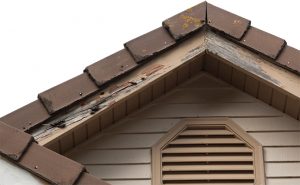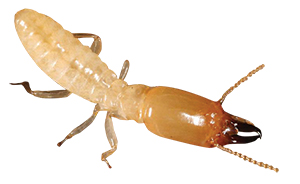Like any animal, subterranean termites must have food, water and shelter. They also try to take the easiest way to obtain all three items. Keep this in mind when inspecting for how and where these termites can invade a structure.
The good news is they function as a colony and, therefore, individual termites do not seek individual trails to make mud tubes. The bad news is a colony can develop several different pathways/tubes into a structure. Compound this by how, in many situations, three or more separate termite colonies can all invade a structure at a single time.
When you find active mud tubes in one location entering from the exterior of a structure, do not stop looking. Tubes can be on the other side of the structure.
Look for lines
Subterranean termites prefer to follow lines to reach a house. Think about lines above and below ground. Anywhere those lines reach a structure is considered vulnerable and a probable point of entry. Major ones include:
- Tree roots above and below ground.
- Wooden fence lines, especially when the bottom part of the fence is in the soil.
- Sidewalk and driveway edges.
- Underground electrical lines.
- Subsoil irrigation pipes.
- Railroad ties.
- Flat wooden pieces of lumber or cardboard resting on the ground adjacent to a building.
Moisture, but not too much
Exposed termites are subject to dehydration, which is why they prefer to remain within mud tubes. Moist areas are favored, but if puddling or flooding is a common occurrence, the termites can drown or be attacked by certain fungi species. For example, the areas in front of downspouts could be detrimental to the termites, but just to the left or right could be ideal.
When looking for additional areas where there is moisture, remember that most plants have a root system, which helps hold moisture and attract termites. A dripping hose, an area where flowers are watered, and the accumulation of water at ground level created by central and window air-conditioners each can create an ideal environment. Also, the drier the soil, the more likely termites will seek out moist areas.
A colony of grazers
Think of subterranean termites as a herd of grazing wildebeests looking for ideal grazing material. Once they find a good feeding location, they remain until the environment is no longer favorable for them. This is another way of explaining to a homeowner why conditions favorable to termites need to be corrected. I’ll close with five more tips:
- Temperature plays a role in termite movement. On a cool, early-spring day, you may find termites under a flat, dark rock. On a hot day, they’ll move on.
- If you find termite wings and/or mud tubes, do not record it as active termites. You have to see live termites to record it as such.
- If the bottom row of shingles on a house is embedded in soil, you may not see any termite tubes unless you dig into the soil.
- Once termites have successfully entered a structure and find it suitable to inhabit, they become obsessed with bringing lots of mud up into the structure. They then build many tubes downward. You can see hundreds of these suspended in mid-air under horizontal beams in unfinished basements. (Editor’s Note: Check out examples of mud tubes in unusual spaces.)
- In some instances, termites build tubes up into the attic for swarming. In other cases, they make mud clusters at slab level and swarm in the basement. It is what makes termites termites: They are living creatures with a mind of their own. They do not read books to learn how to behave. They eat them!
Contact Dr. Austin Frishman, a PMP Hall of Famer, at PMPEditor@northcoastmedia.net.


Leave A Comment